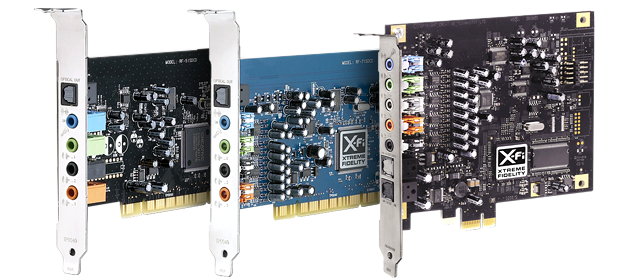Was given a new hand-me-down; here’s how it stacks up to what I’ve got.
Creative SB Live!
- PCI
- Chipset: EMU10K1
- DAC: Sigmatel AC97 (Max. 48KHz/16bit)
- SNR: 94dB
- THD: 0.008%
- Official Driver Support up to Windows XP
- 3rd Party driver support up to Windows 10
Verdict: I should really send this thing off to the recycle depot. The chipset is ancient–any semi-modern computer will likely have better audio than this.
Chaintech AV-710
- PCI
- Chipset: ICEnsemble Envy24HT-S – ICE1724-0222CD 2IA0002631 (Max. 192KHz/24bit)
- DAC: Wolfson WM8728 (Max. 192KHz/24bit for 2-channel mode)
- DAC: Via VT1616 18/VSR DAC for Surround
- SNR: 102dB
- THD: unknown
With some driver trickery, you can coax 192KHz/24bit out of the Wolfson DAC (rear black connector). Drivers beyond XP are a tricky install, but according to this post, there are suitable Japanese drivers all the way up to Windows 8. To enable bit-perfect 44.1kHz playback follow a guide.
Verdict: Ultimately too much of a pain to bother with nowadays.
Asus Xonar DGX
- PCI-E
- Chipset: C-Media CMI8786 High-Definition Sound Processor (Max. 96KHz/24bit)
- DAC: Cirrus Logic CS4382
- SNR: 105dB
- THD: 0.0025%
- Official Driver support up to Windows 8.1
- 3rd Party driver support up to Windows 10
Verdict: The winner and the card I’m currently using. It’s PCI-E, small, has both official and 3rd party driver support, has a very low Total Harmonic Distorion (THD), and a sufficiently high Signal to Noise Ratio (SNR). It’s sampling frequency isn’t as high as the X-Fi, but that probably doesn’t matter. For under $50 it’s tough to beat. Truth be told I’m using it with a pair of $30 Turtle Beach headphones so does any of this matter?
Creative X-Fi XtremeMusic (SB0460)
- PCI
- Chipset: EMU20K1
- DAC: Cirrus Logic CS4382 (Max. 192KHz/24bit)
- SNR: 109dB
- THD: 0.004%
- Official Driver Support up to Windows 8.1
Verdict: Not to be confused with the XtremeAudio card, which isn’t as advanced and doesn’t have the EMU20K1. Might be interesting to hook up for headphone use and compare to the Xonar (using my Grados). I’d say this has become my backup card.
Conclusion
16bit/44.1kHz audio is good enough and higher sampling frequencies are likely unnecessary; I say this as a recovering audiophile. Though there’s potentially some wiggle room available regarding harmonics, I think science has demonstrated quite competently that 16bit/44.1kHz can capture and reproduce audio such that our ears can’t distinguish the difference.
xiph.org article
xiph.org video
Audio Engineering Society
But then why is the 16bit 48kHz SB Live! not an acceptable solution you might ask. This has to do with a number of factors, including the Digital Audio Converter (DAC) employed. The SB Live! is ancient, and DACs today are far better at what they do. The signal to noise ratio is low and the distortion is high.
Out of the audio cards I own the Xonar is the one to use and the X-Fi is my backup; I might was well give away the Chaintech and recycle the SB Live.
